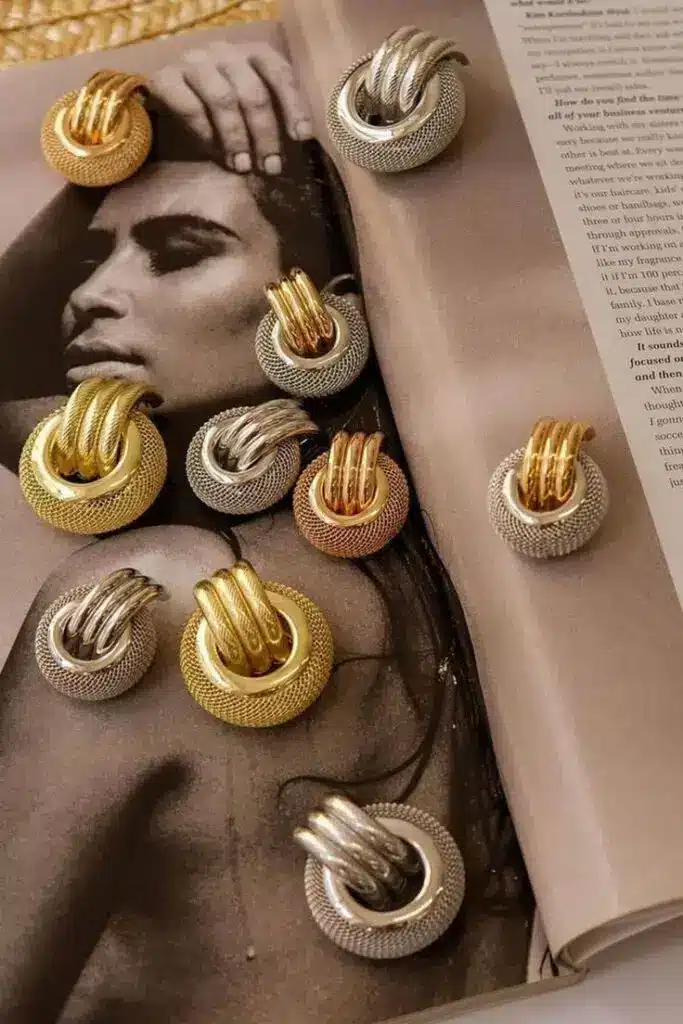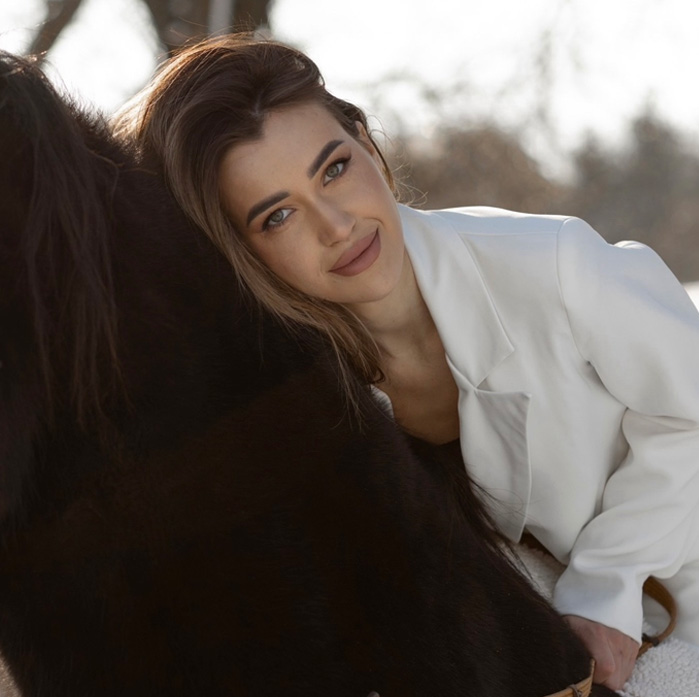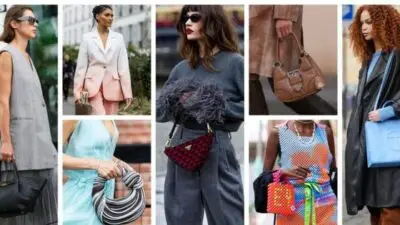Fashion accessories play a key role in enhancing personal style and making a statement. These items can transform an ordinary outfit into something memorable and unique. From jewelry to bags, accessories can reflect individuality and creativity.


Over time, fashion accessories have evolved greatly. They now come in various types and designs, offering endless possibilities for self-expression. Understanding the different styles and materials can help individuals choose accessories that suit their personalities.
The global fashion accessory market continues to grow, highlighting the importance of these items in fashion trends. Knowing how to wear and care for accessories ensures they remain a valuable part of anyone’s wardrobe.
Key Takeaways
- Accessories can enhance any outfit and reflect personal style.
- The market for fashion accessories is rapidly expanding.
- Proper care can extend the life of treasured accessories.
Evolution of Fashion Accessories


Fashion accessories have changed significantly over time. Their development reflects society’s values, technology, and cultural shifts.
History and Origins
Fashion accessories trace back to ancient civilizations. Egyptians adorned themselves with jewelry made from gold and precious stones. These pieces signified wealth and status.
In the Middle Ages, accessories like belts and brooches became common. They were not just decorative; they served practical purposes, such as holding garments together.
The Renaissance saw a rise in elaborate accessories, like feathered hats and intricate jewelry, as art and culture flourished. The Industrial Revolution allowed for mass production, making accessories more widely available.
By the 20th century, accessories such as handbags and sunglasses became essential. Their roles expanded from functional to stylish, influencing personal identity.
Influence of Cultural Movements
Cultural movements have greatly impacted fashion accessories. The 1920s brought flapper culture, leading to shorter hairstyles and bold jewelry. Women embraced pearls and headbands as symbols of liberation.
The 1960s introduced counterculture, affecting fashion and accessories. Vibrant colors and playful styles emerged, with peace symbols and tie-dye patterns gaining popularity.
In the 1980s, excess was celebrated. Big hair and large, bold accessories like oversized earrings defined the style. Fast forward to today, where sustainability shapes choices. Eco-friendly materials and ethical brands are now preferred.
These changes show how social and cultural influences shape what people wear. Fashion accessories remain a reflection of personal identity and values.
Types of Fashion Accessories


Fashion accessories play a key role in enhancing an outfit. They can add style, color, and personality. Several types of accessories include jewelry, bags and purses, footwear, headwear, eyewear, and belts.
Jewelry
Jewelry includes items like rings, necklaces, bracelets, and earrings. These pieces can be made from various materials, such as gold, silver, or gemstones. Moissanite, a popular gemstone alternative to diamonds, has become increasingly favored for its brilliance and affordability. It is especially common in engagement rings and fashion jewelry due to its striking sparkle and ethical sourcing.
Types of Jewelry:
- Necklaces: They can be simple chains or elaborate designs with pendants.
- Rings: These can range from engagement rings to fashion rings with colorful stones.
- Bracelets: They often come in chain styles, bangles, or cuffs.
Jewelry can serve as a statement piece or a subtle addition to an outfit. Many choose jewelry based on personal style or occasions.
Bags and Purses
Bags and purses are essential for carrying personal items. They come in different styles, sizes, and materials. Common types include handbags, totes, clutches, and backpacks.
Popular Bag Styles:
- Handbags: Ideal for daily use, often featuring multiple compartments.
- Totes: These are larger and great for shopping or work.
- Clutches: Perfect for formal events, usually small and handheld.
Many people select bags that match their outfits. A well-chosen bag can elevate a look and add functionality.
Footwear
Footwear is an important accessory that affects both comfort and style. Options range from casual shoes to elegant heels.
Common Footwear Types:
- Sneakers: Casual and versatile, good for everyday wear.
- Boots: Can be stylish and warm, suitable for various climates.
- Heels: Often chosen for formal events or to add height.
The right footwear can support an outfit’s theme and enhance overall appearance. Comfort and fit are also vital when choosing shoes.
Headwear


Headwear adds flair and personality to any outfit. Options include hats, beanies, and headbands. Each type of headwear serves different purposes.
Types of Headwear:
- Hats: Baseball caps, fedoras, and sun hats are popular choices.
- Beanies: Great for colder weather, they offer warmth and style.
- Headbands: These can spice up an outfit and keep hair in place.
Choosing the right headwear can showcase personal style and can be both fashionable and functional.
Eyewear
Eyewear serves both practical and decorative purposes. Sunglasses and prescription glasses are common types. They protect the eyes while adding style.
Types of Eyewear:
- Sunglasses: Available in various shapes and colors, they can make a fashion statement.
- Regular Glasses: Many choose frames that reflect their style, from classic to trendy.
Eyewear can complement any look. Choosing the right style and fit enhances both appearance and comfort.
Belts


Belts are practical accessories made primarily to hold pants in place. They can also act as a style element.
Types of Belts:
- Leather Belts: Durable and classic; suitable for both casual and formal wear.
- Fabric Belts: These come in various designs and are often used for casual outfits.
- Decorative Belts: Often embellished or unique, these add a pop of style.
A well-chosen belt can define the waist and add structure to an outfit. They come in many colors and styles to fit different looks.
Materials and Craftsmanship


Fashion accessories are made from a variety of materials. Each material has its own characteristics and is crafted in unique ways. Understanding these materials helps in choosing the right accessory for specific needs and styles.
Leather and Synthetics
Leather is a popular choice for many fashion accessories. It is durable, flexible, and can age beautifully. Types of leather include full-grain, top-grain, and suede, each with a distinct look and feel.
Synthetics, like polyurethane and PVC, offer alternatives to animal leather. They can mimic leather’s appearance and are often more affordable. Many brands now focus on eco-friendly synthetics, reducing environmental impact while maintaining style.
Metals and Gemstones
Metals are essential in jewelry and other accessories. Common metals include sterling silver, gold, and stainless steel. Each metal has different properties, like strength and corrosion resistance.
Gemstones add beauty and value to accessories. Diamonds, sapphires, and pearls are often used in designs. Knowing about the qualities of these materials helps in selecting pieces that last and shine.
Textiles
Textiles are vital in making versatile fashion accessories. Common textiles include cotton, silk, and polyester. They are used for scarves, bags, and hats.
Different textures and patterns can change the look of an accessory. For example, a silk scarf adds elegance, while a cotton tote is casual and practical. The choice of textile can affect comfort and style, making it important to consider.
Innovative and Sustainable Materials
Innovation has led to new materials in fashion. Recycled plastics and natural fibers like bamboo are now used in production. These materials offer eco-friendly options for consumers.
Sustainable materials often come from renewable sources or reduce waste. Brands focusing on sustainability can appeal to those concerned about the environment. Choosing innovative materials reflects a commitment to both style and responsibility.
Fashion Accessory Design


Fashion accessory design involves various principles and techniques that help create appealing and functional items. This includes understanding current trends and recognizing influential designers and brands in the industry.
Design Principles
Design principles are key aspects that guide the creation of accessories. Important elements include balance, proportion, and harmony.
- Balance helps to distribute visual weight evenly.
- Proportion ensures that all parts of an accessory relate well in size and shape.
- Harmony brings different elements together to create a cohesive look.
Colors and materials also play a significant role. Designers often choose colors that complement each other and materials that suit the accessory’s purpose. Comfort and usability are also crucial to successful designs.
Trend Forecasting


Trend forecasting involves predicting what styles will be popular in the future. This process helps designers create accessories that will appeal to customers.
Factors influencing trends include:
- Cultural shifts: Changes in society can inspire new styles.
- Technology: Innovations may lead to new materials and methods.
- Influencers: Celebrities and fashion icons often set trends.
By analyzing past trends and watching current movements, designers can anticipate what consumers will want. This allows them to stay ahead of the competition and meet market demands effectively.
Iconic Designers and Brands
Certain designers and brands have made a lasting impact on accessory fashion. They shape styles and inspire new designers.


Examples include:
- Chanel: Known for timeless bags and elegant jewelry.
- Prada: Recognized for innovative materials and bold designs.
- Louis Vuitton: Famous for its luxury bags and distinctive patterns.
These designers not only create accessories but also influence how people perceive fashion. Their work remains relevant and often sets the standard for quality and design in the industry.
Wearing Fashion Accessories
Fashion accessories play an important role in how individuals express their personal style. They enhance outfits and convey individual tastes. This section explores how accessories can reflect personal style, their cultural significance, and tips for combining different items effectively.
Style and Personal Expression
Fashion accessories allow people to showcase their unique styles. Items like jewelry, bags, and scarves can transform a basic outfit into something special.
- Jewelry: Necklaces, bracelets, and earrings can reflect personality. For example, bold pieces might suggest confidence, while delicate items can indicate elegance.
- Bags: The choice of bag can impact an outfit’s vibe. A chic handbag may suggest sophistication, while a casual backpack can show a laid-back attitude.
- Scarves and Hats: These accessories can add color, pattern, and texture to an outfit. They can help with seasonal outfits, providing warmth in cooler months or style in warm weather.
Cultural Significance


Accessories often hold cultural meanings. They can symbolize heritage and traditions that are important to many people.
- Cultural Accessories: Certain items, like a bindi or kente cloth, signify cultural identity. Wearing them can express pride in one’s roots.
- Fashion Trends: Accessories can also reflect societal changes. For instance, the rise of eco-friendly fashion has led to more sustainable accessory choices.
- Symbolism: Some items have deep-rooted meanings, such as friendship bracelets symbolizing unity or commitment rings indicating connection.
Combining Accessories
Mixing and matching accessories can create fun and stylish looks. Here are some tips to consider:
- Balance: Pairing bold pieces with subtle items can create contrast. For example, wearing a statement necklace with simple earrings can keep the focus on one area.
- Color Coordination: Using a color palette can help unify accessories. Items in similar hues can bring the whole outfit together.
- Layering: Layering delicate necklaces or stacking bracelets can add depth and interest. However, it’s important not to overcrowd the look.
By understanding these key aspects, individuals can choose and wear fashion accessories to enhance their style and cultural expression.
The Global Fashion Accessory Market


The fashion accessory market is growing rapidly, driven by changing trends and consumer preferences. Many factors influence this market, including new styles and the rise of online shopping.
Market Trends
Current trends show that sustainability is a key focus in the fashion accessory market. Brands are investing in eco-friendly materials, such as recycled plastics and organic fabrics.
Key trends include:
- Personalization: Consumers prefer unique items that reflect their style.
- Minimalism: Simple, elegant designs are gaining popularity.
- Luxury Accessories: High-end items, like designer handbags and watches, continue to attract buyers.
Technological advancements also play a role, with brands using augmented reality for virtual try-ons. This allows customers to see how accessories will look before purchasing them.
Consumer Behavior
Today’s consumers are more informed and value-driven. They often research brands and products online before making a purchase decision.
Important behaviors include:
- Social Media Influence: Platforms like Instagram and TikTok shape buying choices.
- Brand Loyalty: Consumers are more likely to stick with brands that reflect their values.
- Price Sensitivity: Many shoppers seek quality but also look for competitive pricing.
Younger generations prioritize brands that are transparent about their manufacturing practices and sustainability.
E-commerce and Retailing


E-commerce plays a significant role in the fashion accessory market. Online shopping offers convenience and access to a wider range of products.
Major trends in e-commerce:
- Mobile Shopping: Increasing numbers of consumers use smartphones to shop.
- Subscription Services: Brands offer subscription boxes, sending curated accessories regularly.
- Omnichannel Retailing: Stores combine online and offline experiences for customers.
Retailers are adapting to these changes by enhancing their websites and using social media for marketing. These strategies help brands reach more customers and improve sales.
Care and Maintenance


Proper care and maintenance of fashion accessories is essential to keep them looking their best. This section focuses on effective storage solutions, cleaning techniques, and methods for repair and restoration.
Storage Solutions
Storing accessories correctly can prevent damage and keep them organized. Here are some effective solutions:
- Use Displays: A jewelry tree or organizer can keep necklaces from tangling and make selection easier.
- Pouches and Cases: Soft bags and hard cases protect items from scratches and dust.
- Climate Control: Store items in a cool, dry place, away from direct sunlight to avoid fading or warping.
Regularly check the condition of stored accessories. This helps catch any potential issues early, ensuring longevity.
Cleaning Techniques
Cleaning accessories regularly helps maintain their shine and integrity. Each material requires different methods:
- Jewelry: Use a soft cloth. For metal, a gentle polish can restore shine. Soak in warm water with a few drops of dish soap for beaded items.
- Bags: Wipe with a damp cloth. Use a specialized cleaner for leather. Always test on a small area first.
- Sunglasses: Clean lenses with a microfiber cloth. Avoid paper towels, which might scratch the surface.
Make a cleaning schedule based on the frequency of use, ensuring each accessory remains in top condition.
Repair and Restoration


Even with care, accessories can break or wear down. Knowing how to repair them can save money and time:
- Broken Jewelry: Replacing lost stones or re-stringing beads can restore an item. Kits are available for simple repairs.
- Scuffed Bags: Minor scuffs on leather can often be treated with leather conditioner. Some scuffs may require professional help.
- Adjusting Fit: For items like watches or bracelets, adjusting the size is often a straightforward process. Many jewelers can assist.
Regular inspections can help identify needed repairs before they worsen. This proactive approach can keep accessories functional and beautiful.
- 2.0Kshares
- Facebook0
- Pinterest2.0K
- Twitter0



